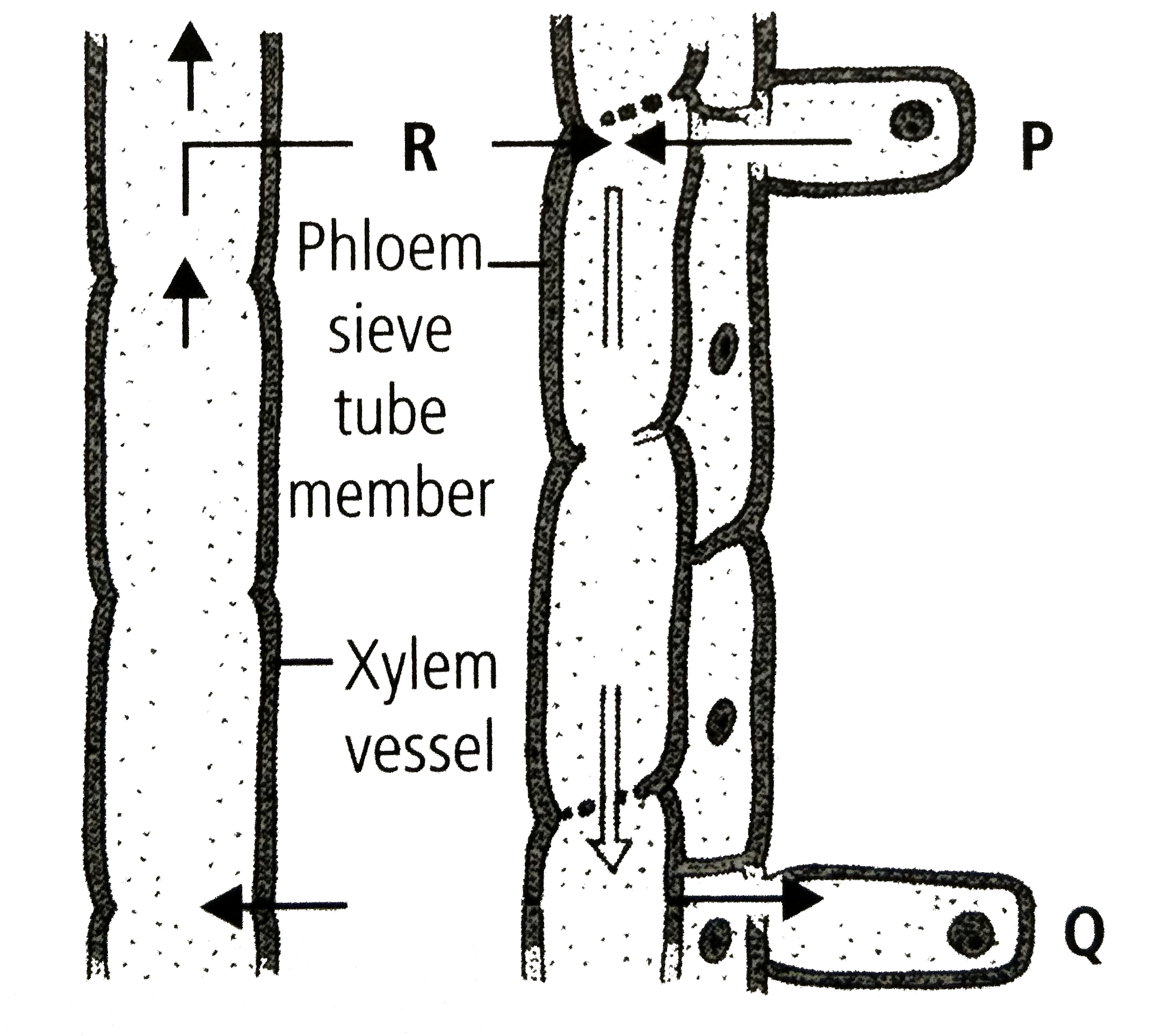Explain pressure flow hypothesis of translocation of sugars in plants
Step-by-Step Solution to the Pressure Flow Hypothesis of Translocation of Sugars in Plants
1. Definition of Pressure Flow Hypothesis:
The pressure flow hypothesis explains how sugars (mainly sucrose) are transported from the source (where they are produced) to the sink (where they are utilized or stored) in plants.
Hint: Remember that the source is typically the leaves and the sink is often the roots.
2. Source of Sugars:
In plants, sugars are primarily produced in the leaves through the process of photosynthesis. These sugars enter the phloem, specifically the sieve tube cells.
Hint: Think about where photosynthesis occurs in plants.
3. Entry into Phloem:
The sugars are actively transported into the sieve tube cells of the phloem. This process is facilitated by companion cells that assist in the movement of sugars.
Hint: Active transport requires energy, so consider how energy is utilized in this process.
4. Osmosis and Water Movement:
Once the sugars are in the phloem, water enters the phloem tissue from the surrounding cells through osmosis. This influx of water increases the turgor pressure within the sieve tubes.
Hint: Recall the role of osmosis in moving water from areas of lower solute concentration to higher solute concentration.
5. Creation of Pressure Gradient:
The increase in turgor pressure creates a pressure gradient within the phloem. This pressure gradient is crucial for the movement of the sugar solution from the source to the sink.
Hint: Think about how pressure differences can drive fluid movement in a system.
6. Movement to the Sink:
As the sugar solution moves through the phloem, it travels towards the sink (roots or other storage organs) where the pressure is lower.
Hint: Consider how pressure differences facilitate movement in a fluid system.
7. Active Transport at the Sink:
Upon reaching the sink, sucrose is again transported out of the phloem into the sink tissues through active transport. This allows the sugars to be utilized for metabolism or stored for later use.
Hint: Remember that the sink is where the sugars are either used for energy or stored.
8. Storage in Roots:
Finally, the sugars are stored in the root tissues, where they can be kept for longer periods until needed by the plant.
Hint: Think about the role of roots in storing nutrients and energy for the plant.
Summary
The pressure flow hypothesis describes how sugars produced in the leaves are actively transported into the phloem, leading to water influx through osmosis, creating a pressure gradient that drives the flow of the sugar solution to the roots, where sugars are actively transported out and stored.
The pressure flow hypothesis explains how sugars (mainly sucrose) are transported from the source (where they are produced) to the sink (where they are utilized or stored) in plants.
In plants, sugars are primarily produced in the leaves through the process of photosynthesis. These sugars enter the phloem, specifically the sieve tube cells.
The sugars are actively transported into the sieve tube cells of the phloem. This process is facilitated by companion cells that assist in the movement of sugars.
Once the sugars are in the phloem, water enters the phloem tissue from the surrounding cells through osmosis. This influx of water increases the turgor pressure within the sieve tubes.
The increase in turgor pressure creates a pressure gradient within the phloem. This pressure gradient is crucial for the movement of the sugar solution from the source to the sink.
As the sugar solution moves through the phloem, it travels towards the sink (roots or other storage organs) where the pressure is lower.
Upon reaching the sink, sucrose is again transported out of the phloem into the sink tissues through active transport. This allows the sugars to be utilized for metabolism or stored for later use.
Finally, the sugars are stored in the root tissues, where they can be kept for longer periods until needed by the plant.
The pressure flow hypothesis describes how sugars produced in the leaves are actively transported into the phloem, leading to water influx through osmosis, creating a pressure gradient that drives the flow of the sugar solution to the roots, where sugars are actively transported out and stored.
Topper's Solved these Questions
- TRANSPORT IN PLANTS BOOK - ICSECHAPTER - TRANSPORT IN PLANTS EXERCISE - NCERT EXERCISE WITH ANSWER (DIFFERNTIATE BETWEEN )
16 Videos
- TRANSPORT IN PLANTS BOOK - ICSECHAPTER - TRANSPORT IN PLANTS EXERCISE - TEST YOUR PROGRESS (HIGHER ORDER THINKING SKILLS QUESTIONS (HOTS))
9 Videos
- THE LIVING WORLD BOOK - ICSECHAPTER - THE LIVING WORLD EXERCISE - Ncert Exercises (Differentiate Between )
4 Videos
Similar Questions
Knowledge Check
Given figure demonstrates the translocation of organic solutes according to pressure flow hypothesis.

Which out of the following statements is incorrect regarding this?AA continuous high osmotic concentration is maintained in region P, which loads a sieve tube element by passively transporting solute molecules into it,BR shows the movement of H2O into sieve tube elements from nearby xylem vessels by osmosisCTranslocation of organic solutes takes place from region P with high turgor pressure to region Q with low turgor pressureDIn region Q material is either consumed or is converted into insoluble storage forms resulting in decreased osmotic pressure.
Which element facilitates translocation of sugars in plants ?
View SolutionDescribe the mass flow hypothesis for trans location of organic solutes (food) in plants.
View SolutionMass flow deals with translocation of :
View SolutionMunch's mass flow hypothesis explains
View SolutionExplain the River Popper hypothesis.
View SolutionThe protoplasmic streaming hypothesis for food translocation has not been accepted on the following grounds.
View SolutionWobble hypothesis explain
View Solution
